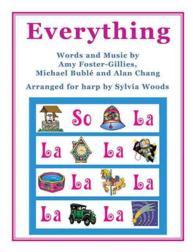- ホーム
- > 洋書
- > 英文書
- > Psychology
Full Description
Conditioned taste aversion is arguably the most important learning process that humans and animals possess because it prevents the repeated self-administration of toxic food. It has not only profoundly influenced the content and direction of learning theory, but also has important human nutritional and clinical significance. In addition to its direct relevance to food selection, dietary habits, and eating disorders, it is significant for certain clinical populations that develop it as a consequence of their treatment. The study of conditioned taste aversions has invigorated new theory and research on drug conditioning and addictions, as well as on conditioned immunity. There has also been a substantial amount of recent research exploring the neural substrates of conditioned taste aversion--its neuroanatomy, pharmacology, and role in the molecular and cellular basis of plasticity.
This book provides a definitive perspective on the current state of research, theory, and clinical applications for conditioned taste aversion effects and methodology. In each chapter, a leading scholar in the field presents a broad range of studies, along with current findings on the topic, highlighting both the major theoretical landmarks and the significant new perspectives. It will be an important resource for both professional and student researchers, who study conditioning, learning, plasticity, eating disorders, and dietary and ingestive behaviors in neuroscience, cognitive neuroscience, cognitive psychology, developmental psychology, clinical psychology, psychopharmacology, and medicine.
Contents
Forward Michael Domjan ; Section 1: Introduction and Historical Significance ; 1. Introduction Steve Reilly and Todd R. Schachtman ; 2. The Origins of Conditioned Taste Aversion Learning: An Historical Analysis Kevin B. Freeman and Anthony L. Riley ; Section II: Behavioral Processes ; 3. Conditioned Taste Aversion and Latent Inhibition: A Review Robert E. Lubow ; 4. Preexposure to the US in Nausea-Based Aversion Learning Geoffrey Hall ; 5. Drug-induced Suppression of CS intake: Reward, Aversion, and Addiction Patricia Sue Grigson, Robert C. Twining, Christopher S. Freet, Robert A. Wheeler, and Rastafa I. Geddes ; 6. Conditioned Disgust, but Not Conditioned Taste Avoidance, May Reflect Conditioned Nausea in Rats Linda A. Parker, Cheryl L. Limebeer, and Shadna A. Rana ; 7. Memory Phenomena and CTA Susanne M. Meehan and David C. Riccio ; 8. Postconditioning Event Manipulations on Processing of the Target CS in CTA Todd R. Schachtman, Ashley Ramsey, and Oskar Pineno ; 9. Conditioned Taste Aversion Based on Running or Swimming Robert A. Boakes and Sadahiko Nakajima ; 10. Mechanisms of Overshadowing and Potentiation in Flavor-Aversion Conditioning W. Robert Batsell, Jr. and Gayla Y. Paschall ; 11. Representation-Mediated Food Aversions Peter C. Holland and Daniel S. Wheeler ; 12. Strain Differences in Taste Aversion Learning: Implications for Animal Models of Drug Abuse Anthony L. Riley, Catherine M. Davis, and Peter G. Roma ; 13. Taste, Disgust and Value: Taste Aversion Learning and Outcome Encoding in Instrumental Conditioning Bernard W. Balleine ; 14. Conditioned Taste Aversion Across the Lifespan from Prenascence to Senescence James R. Misanin, Matthew J. Anderson, and Charles F. Hinderliter ; Section III: Neural Analysis and Physiological Mechanisms ; 15. Central Gustatory System Lesions and Conditioned Taste Aversion Steve Reilly ; 16. Mapping Conditioned Taste Aversion Associations through Patterns of cFos Expression Ilene L. Bernstein, Emily E. Wilkins, and Sabiha K. Barot ; 17. Molecular Mechanisms of Taste Learning in the Insular Cortex and Amygdala Liza Barki-Harrington, Katya Belelovsky, Guy Doron, and Kobi Rosenblum ; 18. Hormonal Modulation of Conditioned Taste Avoidance: The Role of Estradiol Kathleen C. Chambers and Houri Hintiryan ; 19. Genetic Influences on Conditioned Taste Aversion Christopher L. Cunningham, Christina M. Gremel, and Peter A. Groblewski ; 20. Conditioned Taste Aversion Induced by Exposure to High Strength Static Magnetic Fields Thomas A. Houpt and James C. Smith ; Section IV: Clinical Application of Research and Target Populations ; 21. Chemical Aversion Treatment of Alcoholism Sam Revusky ; 22. Taste-Immune Associative Learning Gustavo Pacheco-Lopez, Harald Engler, Maj-Britt Niemi, and Manfred Schedlowski ; 23. Taste Aversions in Pregnancy Tracy M. Bayley , Louise Dye, and Andrew J. Hill ; 24. Role of Conditioned Taste Aversion on the Side Effects of Chemotherapy in Cancer Patients Giuseppe Scalera and Mario Bavieri







